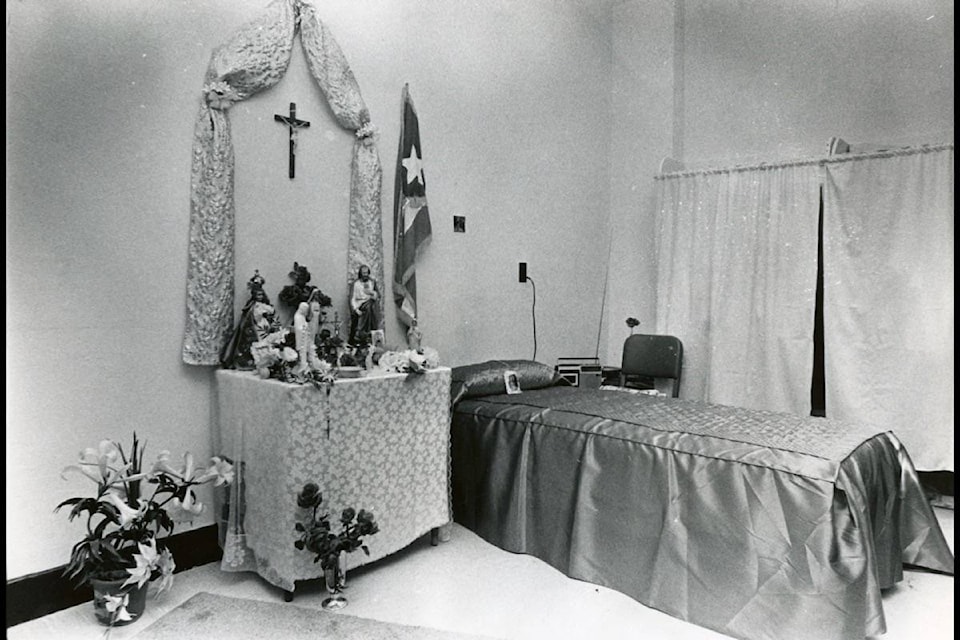There is a moment in the popular Netflix show “Orange Is the New Black” when all the women crowd into the television room and wait to see where Judy King – a domestic mogul who not by accident resembles Martha Stewart – is going to be imprisoned.
“Do you have any details on Judy King’s placement, sir,” a reporter can be heard asking on the television. “We’d like to know, sir.”
“Judy King will serve her time at the Alderson correctional facility,” a man replies on the screen.
In that moment, the fictional setting of Litchfield, the prison on the show, gives a not-so-subtle nod to a real women’s prison - and not just any one. The Alderson Federal Prison Camp has a rich history filled with powerful women who both pushed for the walls to be built there and served time within them.
Located in West Virginia, about a five-hour drive from Washington, D.C., it was the first federal prison for women in the country and has housed some unforgettable inmates: jazz legend Billie Holiday, Puerto Rican nationalist Lolita Lebr√≥n, World War II propagandist Tokyo Rose, Charles Manson devotee Lynette “Squeaky” Fromme, and, yes, Martha Stewart.
In 1923, five years before the prison opened, The Washington Post described the push for it by nearly two dozen national women’s organizations and Assistant Attorney General Mabel Walker Willebrandt, the first woman to hold that position. Their plans called for a federal facility for women that would be run by women.
The West Virginia property was appealing for its location: It was close to Washington but remote enough that escaping the property would be difficult. Fromme, who was serving time for the attempted assassination of President Gerald R. Ford, once fled. She was captured a day and a half later, walking along a road two miles south of the facility.
When the prison accepted its first three residents in 1927 and then officially opened in 1928, it offered a campus of cottages. There were no walls or armed guards. The main workshops were sewing and knitting. (Now, among its many self-improvement groups are Narcotics Anonymous and yoga.)
Eleanor Roosevelt toured the campus on May 28, 1934, mingling with the inmates, walking through the farmland, tilled by the women, and eating the same lunch as the prisoners.
The first lady would not be the last famous person to walk the grounds - although, unlike her, the others didn’t have the liberty to leave the same day.
In 1947, Holiday was convicted of possession of narcotics and served one year at Alderson, where she endured a difficult detox.
“It was called ‘The United States of America versus Billie Holiday,’ ” she later wrote of her case, “and that’s just the way it felt.” She reportedly didn’t sing a note while in prison.
In 1949, Iva Toguri D’Aquino, the Japanese American known as Tokyo Rose, ended up at Alderson after she was convicted of treason for broadcasting propaganda from Japan to U.S. servicemen in World War II. She denied any wrongdoing but served six years. In 1977, she was granted a presidential pardon from Ford.
Lebrón, who led three other Puerto Rican nationalists in an attack on the U.S. House of Representatives that left five congressmen wounded, served 25 years in the prison. She was originally sentenced to serve 56 years but received a presidential pardon from Jimmy Carter in 1979.
When Martha Stewart arrived at the facility as prisoner No. 55170-054, the campus was immediately nicknamed “Camp Cupcake.” She called the place “Yale” and in an interview with David Letterman said she didn’t remember her first day. “I asked my fellow inmates a couple months later, I said, ‘How did I behave that first day?’ because everyone was watching me,” she said. “They said I was walking around in a daze.”
Of the lessons she learned there, she said: “The rehabilitation really is nonexistent for the most part.”
Former Alderson inmate Clare Hanrahan, who served a six-month sentence in 2001 for civil disobedience, said her experience was far from the one originally envisioned by the women who fought for the prison to open.
“The founding mothers wanted a separate women’s reformatory and a homelike setting,” Hanrahan, 68, said. “These were women who cared. And the situation I experienced there, and I think you’d find it to be even harsher now, was male dominated, punitive. I would imagine it is like being in an abusive relationship where they never had to hit you. The threat was always there.”
The prison’s first superintendent, Mary Belle Harris, had written that she wished for all the positions to be filled by women, “for reasons too obvious to require explanation.” But Hanrahan said male guards, at will, patted down inmates and pulled the covers off them as they slept.
Hanrahan, who has written about her experience, said there were wrenching moments of seeing children peeled from their mothers after visits. And women so old they had to be helped up the stairs. But the hardest thing for her, she said, “was cooperating with my own imprisonment.”
“There were no bars,” she said. “When I would have visitors, and I would have frequent visitors, I had to pass the road that would lead me out to freedom, and my feet became like lead.”
Hanrahan said she hasn’t watched “Orange Is the New Black.”
“I just haven’t felt like going back,” she said. “It’s hard when you get out. You want to put it behind you.”
